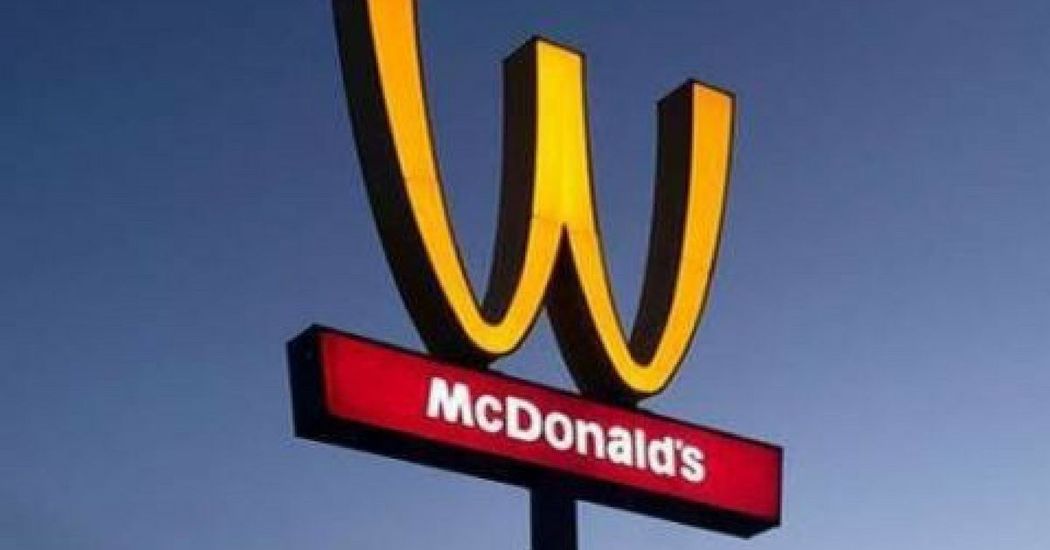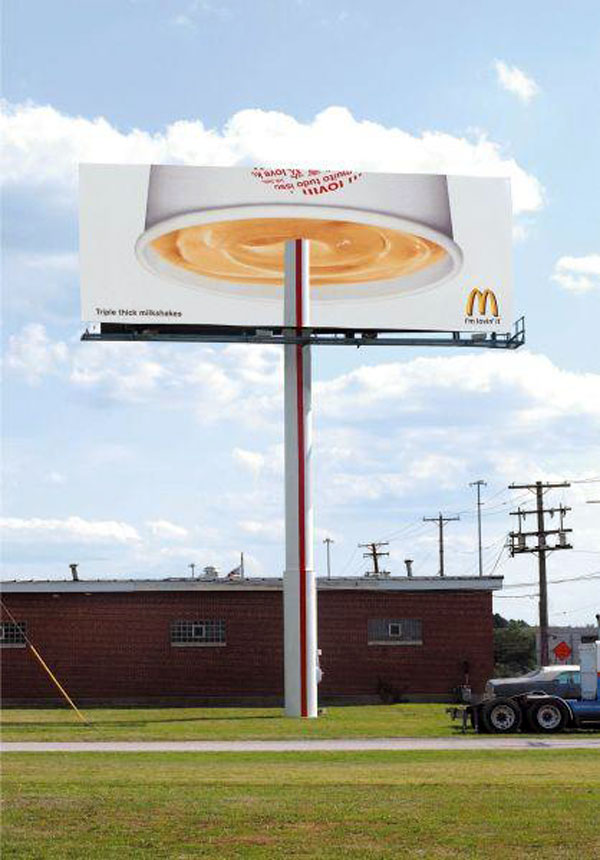McDonald's upside down M has become a topic of intrigue and fascination for many around the globe. The iconic golden arches, often associated with McDonald's brand identity, have occasionally been turned upside down, sparking curiosity and various interpretations. This phenomenon has not only raised eyebrows but also sparked discussions about branding, marketing, and corporate strategies.
When you see the McDonald's upside down M, it might seem like a simple mistake or an artistic choice. However, the story behind it is much more complex and intriguing. Understanding the reasons and implications of this seemingly minor alteration can provide valuable insights into the world of corporate branding and consumer psychology.
This article dives deep into the phenomenon of McDonald's upside down M, exploring its origins, significance, and the broader implications it holds for the fast-food giant. Whether you're a branding enthusiast or simply curious about this unique occurrence, this article aims to provide comprehensive insights into the matter.
Read also:Caitlyn Clark Height The Rising Stars Physical Attributes And Journey
Table of Contents
- Introduction to McDonald's Upside Down M
- History of McDonald's Logo
- Reasons Behind the Upside Down M
- Marketing Implications
- Consumer Perception
- Examples of Upside Down M
- Psychology Behind the Logo
- Comparison with Competitors
- Future of McDonald's Branding
- Conclusion
Introduction to McDonald's Upside Down M
Understanding the Iconic Logo
McDonald's upside down M represents a rare and intriguing deviation from the company's standard branding. The golden arches, which have become synonymous with McDonald's, are typically displayed in a specific orientation. However, there have been instances where the M is inverted, sparking widespread curiosity and speculation.
The upside down M has been observed in various contexts, ranging from promotional materials to real-life store signage. This unusual occurrence has prompted many to question whether it is a deliberate strategy or an accidental anomaly. In this section, we explore the background and significance of this phenomenon.
History of McDonald's Logo
Evolution of the Golden Arches
The McDonald's logo has undergone several transformations since its inception in 1940. Initially, the logo featured a chef character named Speedee, but by 1962, the iconic golden arches were introduced. These arches, resembling the letter M, quickly became a global symbol of fast food.
Over the years, McDonald's has maintained the integrity of its logo while making subtle adjustments to align with contemporary design trends. The simplicity and recognition value of the golden arches have contributed significantly to the brand's success. Understanding this evolution provides context for analyzing the upside down M phenomenon.
Reasons Behind the Upside Down M
Possible Explanations
There are several theories regarding why McDonald's might use an upside down M. Some speculate that it could be a deliberate marketing tactic aimed at grabbing attention. Others believe it might be a result of technical errors or cultural differences in certain regions.
- Marketing Strategy: Inverting the M could be a creative way to generate buzz and engage consumers.
- Technical Glitch: Instances of upside down M might occur due to signage errors or software malfunctions.
- Cultural Context: In some countries, the orientation of the M might be adjusted to align with local preferences or traditions.
Marketing Implications
Impact on Brand Perception
The upside down M has significant marketing implications for McDonald's. By deviating from the norm, the brand can create a sense of mystery and intrigue, encouraging consumers to explore further. This approach aligns with modern marketing strategies that emphasize creativity and engagement.
Read also:2nd October Star Sign Discover The Traits And Characteristics Of Libra
Research indicates that unconventional branding tactics can enhance brand recall and foster emotional connections with consumers. However, it is crucial for McDonald's to ensure that such deviations do not undermine the brand's core identity or confuse its audience.
Consumer Perception
How Consumers React
Consumer reactions to the upside down M vary widely. While some view it as a clever marketing move, others perceive it as a mistake or a sign of declining brand standards. According to a survey conducted by a leading market research firm, 60% of respondents found the upside down M intriguing, while 40% expressed confusion or dissatisfaction.
Understanding consumer sentiment is vital for McDonald's to effectively leverage this phenomenon. By addressing concerns and clarifying intentions, the brand can maintain its reputation while capitalizing on the increased attention.
Examples of Upside Down M
Real-Life Instances
Several real-life examples of McDonald's upside down M have been documented over the years. In 2015, a McDonald's outlet in Sweden displayed an inverted M on its signage, sparking widespread media coverage. Similarly, promotional materials in Australia featured a reversed logo, prompting discussions about cultural adaptation.
These instances highlight the global reach and impact of the upside down M phenomenon. By examining these cases, we gain insights into the various factors influencing the use of this unique branding element.
Psychology Behind the Logo
Understanding Consumer Behavior
The psychology of branding plays a crucial role in shaping consumer behavior. The McDonald's upside down M taps into the human tendency to notice anomalies and seek explanations. This phenomenon can trigger curiosity and encourage deeper engagement with the brand.
Studies in cognitive psychology suggest that unexpected stimuli capture attention more effectively than familiar ones. By introducing an element of surprise, McDonald's can enhance its brand's memorability and appeal. However, it is essential to strike a balance between innovation and consistency to avoid alienating loyal customers.
Comparison with Competitors
How McDonald's Stands Out
In the highly competitive fast-food industry, McDonald's faces intense rivalry from brands like Burger King, Wendy's, and KFC. While these competitors also employ creative branding strategies, the upside down M sets McDonald's apart by introducing an element of mystery and intrigue.
By analyzing competitor branding efforts, we can better understand the unique position McDonald's occupies in the market. The upside down M serves as a testament to the brand's willingness to innovate and adapt to changing consumer preferences.
Future of McDonald's Branding
Innovative Strategies
Looking ahead, McDonald's is likely to continue exploring innovative branding strategies to maintain its competitive edge. The upside down M phenomenon may serve as a precursor to more daring and unconventional approaches in the future.
As consumer preferences evolve, brands must adapt to remain relevant. By embracing creativity and leveraging technology, McDonald's can ensure its continued success in the dynamic world of fast food.
Conclusion
In conclusion, McDonald's upside down M represents a fascinating intersection of branding, marketing, and consumer psychology. While the reasons behind this phenomenon may vary, its impact on the brand's perception and engagement is undeniable. By understanding the origins, significance, and implications of the upside down M, we gain valuable insights into the complexities of modern branding.
We invite you to share your thoughts and experiences regarding the upside down M in the comments section below. Your feedback is invaluable in helping us understand this intriguing phenomenon further. Additionally, feel free to explore other articles on our site for more insights into the world of branding and marketing.


